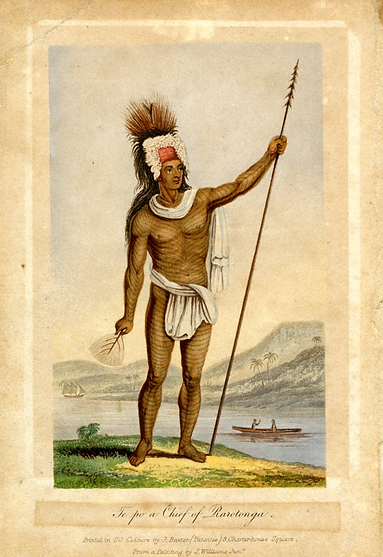


The Cook Islands
The Cook Islands is located between French Polynesia and American Samoa. It comprises 15 islands and has a population of around 17,500. It doesn't get much more remote or more beautiful— with the perfect beaches, deep jungle and coral lagoons, each of the 15 islands seems more breathtaking than the last.
The Islands
The "Cooks" is in the centre of the Polynesian triangle flanked to the west by Tonga and Samoa and to the east by Tahiti and French Polynesia. The group is made up of fifteen islands which are scattered over two million square kilometers of ocean. They fall into two distinct groups: The Southern Group is the most popular with 90% of the population. Six of the nine islands are accessible by regular air services. The more remote Northern Group has six islands, three of which - Manihiki, Penrhyn and Pukapuka are accessible by air.
Rarotonga is the largest island lying at the southern end of the group. The capital, Avarua is a thriving administrative and shopping centre with restaurants, hotels, banking and other facilities including the International Airport. There are first class resorts, reef protected bays in which to snorkel swim and sail and local bus transport which encircles the island every forty-five minutes.
From Rarotonga, you can visit other Cook Island destinations such as Aitutaki, Atiu, north east of Rarotonga which offers untouched beaches and coral reefs riddled with caves; Mangaia, south east of Rarotonga surrounded by a narrow fringing reef backed by the formidable cliffs of Makatea which reach heights of up to 60 meters; Mauke, with its fine caves located in the cliffs of the coral reef; Mitiaro which has a large swampy interior; Penrhyn, Pukapuka, Rakahanga, Manihiki, Nassau, Palmerston, and Suwarrow which has no permanent resident only a caretaker.
The People
The natural, unspoilt beauty and charm of our landscape is matched by the friendliness of our people who think nothing of offering a lift, striking up a conversation or inviting visitors on a night out. Part of our culture, our outgoing spirit means we love engaging with travellers and sharing our little paradise lifestyle. People may come for the warmth of our sun, but remember the warmth of the locals forever. The people are mostly Polynesian, Cook Island Maoris, related to the New Zealand Maoris and the Tahitians. The Pukapukans however are unique in that they are closer to the Samoans. Most of the population lives on Rarotonga and in the southern group. Their local greeting is "kia orana" ("may you live on").


Activities
There are plenty of ways to enjoy our islands and your holiday. Wander beaches with virtually nobody on them, relax in a hammock or get out on the lagoon and experience some of the activities on offer. The Cook Islands is like one big resort where you can easily go from pampering to paddle boarding; from kayaking to cocktails; from island hikes to island nights. The vibe is chilled and we can’t wait to welcome you to our Polynesian paradise.
History
Though spread across a vast empty expanse of ocean; the Polynesians knew all these islands by heart long before the first Europeans came. Rarotonga was first sighted by the Polynesians between 600 and 800 AD. Many anthropologists believe that these people may have originated in Peru and migrated to Malaya in "Asia Minor" which, in this case, refers to Southeast Asia and beyond, to such places as India, and then to Polynesia. However, one local legend says that they came from a land called Avaiki, (place you were before, which is understood to refer to Raiatea in French Polynesia). Another Rarotongan legend states that an ancestor named Tu-te-rangi-marama dwelt in the land of Atia-te-varinga-nui which means Atia-where-vari-was-abundant. In Rarotonga, the word vari means mud, but a connection has been seen between vari and the south Indian word padi meaning rice. It has thus been thought that the Polynesian ancestors lived in a land where rice was grown in mud and that after they had left the rice lands behind them, they applied the word vari to the mud of taro swamps. One eminent authority believed that Atia was located in the basin of the Ganges. Perhaps the location is right, but the name Atia looks suspiciously like a Polynesian form of Asia. And so by isolated words and place names students have tried to prove that the Rarotongans travelled from the Land of the Pharaohs to India en route to the shores of the Pacific.


The Spanish explorer Alvaro de Mendana first sighted Pukapuka in 1595. He was followed by Pedro Fernandez de Quiros who discovered Rakahanga in 1606. In the 1770s Captain James Cook made contact with Atiu, Mangaia, Manuae, Palmerston and Takutea which he called the Hervey Islands. In 1789, the Bounty Mutineers visited the bays of several islands on their way to Pitcairn Island. It was the Russian cartographer Johann von Krusenstern who named the southern group the Cook Islands in 1824. New Zealand law took effect in 1901 and after pressure from the UN the group became a self-governing state in free association with New Zealand on the 4th August 1965, a day which is now celebrated as Constitution Day.
